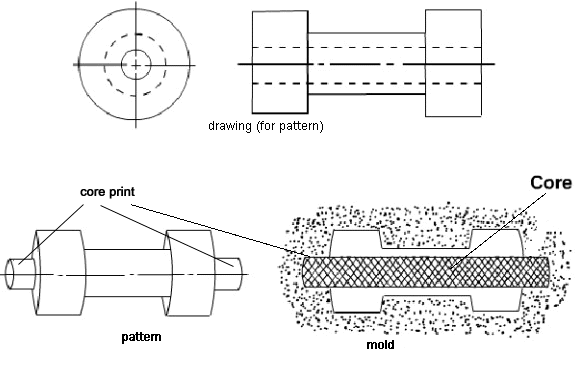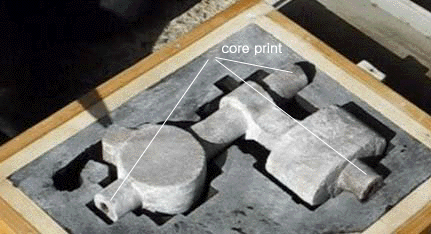| 1 편 주 조 |
|---|
|
Core and Core print
|
|
 Fig. 1 |
 Fig. 2 |
|
Castings are often required to have holes, recesses, etc. of various sizes and shapes. Theseimpressions can be obtained by using cores. So where coring is requ ired, provisionshould be made to support the core inside the mold cavity. Core prints are used to servethis purpose. The core print is an added projection on the pattern and it forms a seat in themold on which the sand core rests during pouring of the m old. The core print must be of adequate size and shape so that it can support the weight of the core during the castingoperation. Depending upon the requirement a core can be placed horizontal, vertical andcan be hanged inside the mold cavity. A typical job, its pattern and the mold cavity withcore and core print is shown in Figure 1.Fig. Core print design requires various considerations. They are :
Furthermore, design of the core print depends on the type of core classified as:
|
|
|
|
|